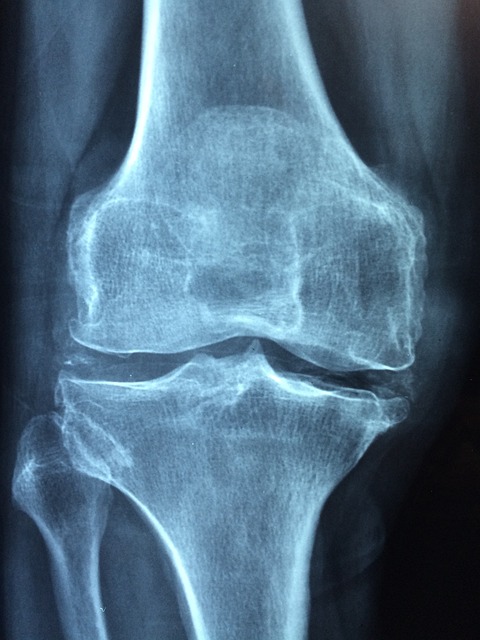## Understanding arthritis and its impact on exercise
Arthritis is a common condition that affects millions of people worldwide. It is characterized by inflammation and stiffness in the joints, making movement painful and challenging. When you have arthritis, exercise might be the last thing on your mind. However, regular physical activity can actually help manage the symptoms of arthritis and improve your overall well-being.
One of the key factors to consider when exercising with arthritis is understanding the impact it can have on your joints. Arthritis can cause the cartilage in your joints to deteriorate, leading to increased friction and discomfort during movement. It’s important to choose exercises that minimize stress on the joints while still providing the necessary benefits.
Benefits of exercise for arthritis
Despite the challenges, exercise offers numerous benefits for individuals with arthritis. Regular physical activity can help reduce pain, improve flexibility, strengthen muscles, and enhance joint function. Exercise also promotes weight management, which is crucial for individuals with arthritis, as excess weight puts additional strain on the joints.
Additionally, exercise can have a positive impact on your mental health. It can help reduce stress, boost your mood, and improve your overall quality of life. Engaging in physical activity can also provide an opportunity to socialize and connect with others who share similar experiences.
Common mistakes to avoid when exercising with arthritis
When it comes to exercising with arthritis, there are several common mistakes that should be avoided. One of the most common mistakes is overdoing it. Pushing yourself too hard or engaging in high-impact activities can exacerbate joint pain and potentially cause further damage. It’s important to listen to your body and start slowly, gradually increasing the intensity and duration of your workouts.
Another mistake to avoid is neglecting proper warm-up and cool-down routines. Warm-up exercises help prepare your muscles and joints for activity, while cool-down exercises help prevent stiffness and promote recovery. Skipping these essential components of your workout can increase the risk of injury and worsen arthritis symptoms.
Lastly, it’s important to avoid repetitive motions that put excessive strain on the joints. Repetitive movements can lead to joint overuse and contribute to inflammation. Varying your exercises and incorporating a variety of movements can help distribute the load more evenly across your joints.
Best exercises for arthritic knees
When it comes to arthritis in the knees, there are specific exercises that can help alleviate pain and improve joint function. One of the best exercises for arthritic knees is swimming or water aerobics. The buoyancy of the water reduces the impact on your joints while providing resistance for muscle strengthening. Additionally, cycling or using a stationary bike is a low-impact exercise that can help improve knee mobility and strengthen the surrounding muscles.
Another effective exercise for arthritic knees is tai chi. This ancient Chinese martial art focuses on slow, gentle movements that promote balance, flexibility, and joint stability. Tai chi has been shown to reduce pain and improve physical function in individuals with knee osteoarthritis.
Lastly, yoga can be beneficial for arthritic knees. Gentle yoga poses can help improve flexibility, strengthen the muscles around the knee, and reduce pain. It’s important to choose yoga classes or instructors that are experienced in working with individuals with arthritis to ensure a safe and effective practice.
Stretching exercises for osteoarthritis
Stretching exercises are crucial for individuals with osteoarthritis, a common form of arthritis that affects the joints. Stretching helps improve flexibility, reduce stiffness, and increase range of motion. When performing stretching exercises for osteoarthritis, it’s important to start slowly and avoid any movements that cause pain.
One effective stretching exercise for osteoarthritis is the quadriceps stretch. Stand near a wall or use a chair for support. Bend one knee and grab your ankle with your hand, pulling your heel towards your buttocks. Hold the stretch for 30 seconds and then release. Repeat on the other side.
Another beneficial stretch for osteoarthritis is the hamstring stretch. Sit on the edge of a chair with one leg extended in front of you. Keep your back straight and gently lean forward, reaching towards your toes. Hold the stretch for 30 seconds and then switch to the other leg.
Incorporating these stretching exercises into your daily routine can help improve joint flexibility and reduce pain associated with osteoarthritis.
Tips for protecting your joints while exercising
Protecting your joints while exercising is crucial to prevent further damage and minimize pain. Here are some tips to help you exercise safely with arthritis:
- Start with a proper warm-up: Before engaging in any exercise, it’s important to warm up your muscles and joints. This can include light aerobic activity, such as walking or cycling, and gentle stretching.
- Listen to your body: Pay attention to any pain or discomfort during exercise. If an activity causes pain, modify it or try a different exercise that is more joint-friendly.
- Use proper form and technique: When performing exercises, ensure that you are using correct form and technique. This can help reduce the risk of injury and maximize the benefits of the exercise.
- Choose low-impact activities: Opt for low-impact exercises that minimize stress on the joints, such as swimming, cycling, or using an elliptical machine.
- Take breaks and rest when needed: It’s important to listen to your body and take breaks when necessary. Resting allows your joints to recover and prevents overuse.
- Use assistive devices if needed: Depending on the severity of your arthritis, you may benefit from using assistive devices, such as braces, splints, or walking aids, to support your joints during exercise.
By following these tips, you can protect your joints and exercise safely with arthritis.
Creating a safe and effective exercise routine for arthritis
Creating a safe and effective exercise routine for arthritis involves a combination of cardiovascular exercises, strength training, and flexibility exercises. It’s important to consult with your healthcare provider or a qualified exercise professional to develop a routine that suits your specific needs and abilities.
When designing your exercise routine, aim for a balance between different types of exercises. Include activities that improve cardiovascular fitness, such as walking, swimming, or cycling. Incorporate strength training exercises that target the major muscle groups to improve joint stability and overall strength. Additionally, include flexibility exercises, such as yoga or stretching, to improve joint range of motion and reduce stiffness.
Start with shorter durations and lower intensities, gradually increasing both as your fitness level improves. Remember to always listen to your body and modify exercises as needed. It’s better to start with a conservative approach and progress gradually to avoid any setbacks or injuries.
Other forms of exercise for joint pain relief
In addition to traditional exercises, there are other forms of exercise that can provide joint pain relief for individuals with arthritis. These include:
- Aquatic therapy: Water-based exercises, such as water aerobics or hydrotherapy, can help reduce joint pain and improve mobility. The buoyancy of the water provides a supportive environment for exercise.
- Pilates: Pilates is a low-impact exercise method that focuses on core strength, flexibility, and postural alignment. It can help improve joint stability and reduce pain.
- Tai chi: As mentioned earlier, tai chi is an ancient martial art that incorporates slow, flowing movements. It can improve balance, flexibility, and joint function.
- Low-impact aerobics: Low-impact aerobic classes, specifically designed for individuals with arthritis, can provide a safe and effective way to improve cardiovascular fitness without putting excessive stress on the joints.
- Range of motion exercises: These exercises focus on moving the joints through their full range of motion to improve flexibility and reduce stiffness. They can be done with or without resistance bands or weights.
By exploring these alternative forms of exercise, you can find additional options to manage joint pain and improve your overall well-being.
Seeking professional guidance for exercise with arthritis
It’s always advisable to seek professional guidance when starting an exercise program, especially if you have arthritis. A healthcare provider or a qualified exercise professional can assess your individual needs and provide personalized recommendations.
They can help you determine the most suitable exercises for your condition, guide you on proper form and technique, and monitor your progress. They can also assist in modifying exercises to accommodate any physical limitations or joint restrictions.
Remember, everyone’s experience with arthritis is unique, and what works for one person may not work for another. Seeking professional guidance ensures that you receive the most appropriate advice and support for your specific situation.
Conclusion: Empowering yourself to exercise safely with arthritis
Living with arthritis doesn’t mean you have to give up on exercise. In fact, regular physical activity can be a powerful tool in managing your symptoms and improving your quality of life. By understanding the impact of arthritis on your joints, avoiding common exercise mistakes, and incorporating joint-friendly exercises into your routine, you can exercise safely and protect your joints.
Remember to start slowly, listen to your body, and seek professional guidance when needed. By taking a proactive approach to managing your arthritis through exercise, you can empower yourself to live a healthier, more active life.
Consult with a healthcare provider or qualified exercise professional to create an exercise routine tailored to your specific needs and abilities. Don’t let arthritis hold you back from enjoying the benefits of regular physical activity. Start exercising safely and protect your joints today!



